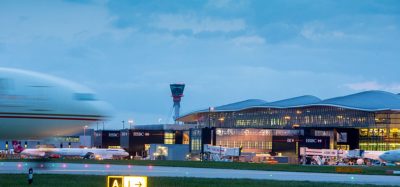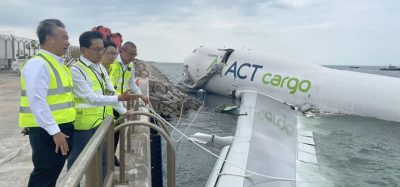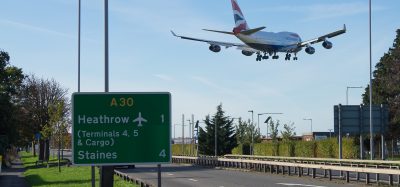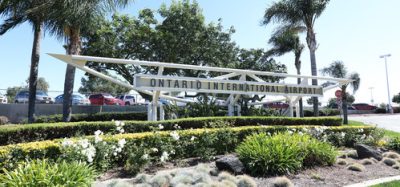Surface friction management at MSP
Posted: 3 April 2007 | Joshua Paurus and Jeff Mattson, Assistant Managers, Airside Operations Department, Minneapolis - St. Paul International Airport (MSP) | No comments yet
The Metropolitan Airports Commission (MAC) is a public corporation of the State of Minnesota, USA. With staff of approximately 550 employees, the MAC owns and operates MSP and six reliever airports in the Twin Cities metropolitan area. Operating much like a private business, the MAC pays expenses from the revenues it generates from airline rates and charges, parking, concessions and building and ground rent. The MAC has fifteen commissioners, thirteen of which are appointed by the Governor of Minnesota, with the other two being representatives of the mayors of Minneapolis and St. Paul.
The Metropolitan Airports Commission (MAC) is a public corporation of the State of Minnesota, USA. With staff of approximately 550 employees, the MAC owns and operates MSP and six reliever airports in the Twin Cities metropolitan area. Operating much like a private business, the MAC pays expenses from the revenues it generates from airline rates and charges, parking, concessions and building and ground rent. The MAC has fifteen commissioners, thirteen of which are appointed by the Governor of Minnesota, with the other two being representatives of the mayors of Minneapolis and St. Paul.
MSP is located on approximately 3400 acres, between the cities of Minneapolis and St. Paul. With 127 aircraft gates at two terminals, MSP moved 35.6 million passengers in 2006. The airport ranked 15th busiest in the world for operations with 475,668 movements – more than 1300 per day. The airfield consists of four runways, two being parallel (12L/30R and 12R/30L), one crosswind (4/22) and one north-south (17/35), which opened in the Autumn of 2005 to provide much needed relief to the parallel runways.
The MAC Airside Operations department is responsible for MSP’s surface friction management program. With a staff of 12 people, the department’s other primary responsibilities include: Airfield inspections and condition reporting, NOTAM issuance, emergency management, wildlife hazard management, AOA driver’s training, airfield construction oversight, airfield surface opening/closing, weather monitoring and snow and ice control coordination.
Join us live: Shaping the Next Generation of Hold Baggage and Air Cargo Screening
Join us live for an insightful webinar on 11th December at 14:00 GMT, in collaboration with Smiths Detection, as we explore the strategic balance of operational efficiency, regulatory compliance, and sustainability in high-volume security environments.
This session offers a focused look into future-proofing your security strategy.
Key learning points
- Cost Reduction: Strategies to minimize bag travel time while simultaneously reducing operational costs.
- Regulatory Roadmap: Insights into the next wave of regulatory changes and their impact on future investment decisions.
- Sustainable Systems: Practical approaches to building sustainability into security systems and lowering the total cost of ownership (TCO).
- Scalable Solutions: Real-world examples of scalable systems supporting current airport growth and preparing for tomorrow.
Register now for expert insights, case studies, and actionable strategies on operational efficiency!
Pavement evaluation equipment
MSP International Airport has been utilising Continuous Friction Measurement Equipment manufactured by the SARSYS Company since 1990. Along with a 1990 Saab 900 and a 2001 Saab 9-5, MSP will add a third Surface Friction Tester (SFT) by the end of the year.
The vehicles are equipped with a 5th wheel in the trunk intended to simulate an aircraft tyre. During testing runs, this wheel is hydraulically lowered to the pavement surface by the operator. For winter friction testing, a high pressure (100psi) grooved testing tyre is used. When conducting summer maintenance testing, the SFT sprays a 1mm layer of water in front of a low pressure (30psi) slick testing tyre. The vehicle’s on-board computer calculates the amount of friction generated between the measuring wheel and the pavement surface. Along with a printout in the vehicle, friction evaluation results are electronically transmitted to the Airside Operations office via a ‘Freewave’ radio system for instant evaluation and decision-making by the airport’s Duty Manager.
Summer friction management
MSP utilises a year-round approach to runway friction management. During the warm summer months, aircraft landings deposit large amounts of tire rubber on the landing surfaces. Over time, the accumulation of rubber fills in the surface variations, creating a smooth surface. When this smooth surface becomes wet, such as during a rain storm, aircraft can suffer diminished braking ability and even loss of directional control.
Federal Aviation Administration (FAA) guidance to U.S. airports on this subject comes in the form of Advisory Circular (AC) 150/5320-12C, titled “Measurement, Construction and Maintenance of Skid-Resistant Airport Pavement Surfaces.” The FAA states that any runway used by jet aircraft should be evaluated at least once each year. A simple visual inspection of runway conditions has been proven unreliable and decelerometers (Tapley, Bowmonk, etc) are not approved for runway maintenance surveys. While approved for winter use, decelerometers are not capable of continuous measurement. Therefore, the AC recommends that airports with jet traffic should own, or have access to, Continuous Friction Measurement Equipment (CFME). As depicted in Appendix 4 of the AC, there are currently nine CFME devices approved by the FAA.
The surface of a runway is composed of two types of texture, Macrotexture and Microtexture. Macrotexture is described as the visible roughness of the surface as a whole. This is the surface variation, which allows water to escape from under the aircraft tire. Microtexture is the fine-scale roughness of the surface. Most likely this roughness is not visible, but can be felt with the hand, comparable to the feel of a fine grade of sandpaper.
The diagram below shows four different combinations of runway texture. In the ideal situation of good macrotexture and good microtexture, high Ì (coefficient of friction) values exist at all speeds. In a case of rough macrotexture, combined with smooth microtexture, only average Ì values are attained at high speeds. If the opposite situation occurred – i.e. smooth macrotexture and rough microtexture – acceptable Ì values would exist at low speeds, with severely diminished values at high speeds. In the worst case scenario, that being smooth macrotexture and microtexture, Ì values drop dramatically with increased speeds.
MSP conducts summer maintenance friction tests on a weekly basis to determine rubber removal needs. These results are disseminated to MAC’s Field Maintenance department. An example of the results is given, displayed as a graphical depiction of the runway, detailing areas in need of corrective action. The length of each runway is tested at ten and twenty feet each side of centerline. The graph depicts both the Maintenance Planning Level and the Minimum Friction Level.
The Maintenance Planning Level as described by the AC is the average Ì of a wet pavement surface that is less than the specified planning level number (60Ì for MSP) for 1000 feet or more. The Airport Operator should evaluate the cause and extent of the friction deterioration and appropriate action should be taken if an area is below this level. The Minimum Friction Level is the average Ì of a wet pavement surface that is less than the specified planning level number (50Ì for MSP) for 500 feet and the adjacent 500 foot segment is less than the Maintenance Planning level. If an area is below the Minimum Friction Level, corrective action should be taken immediately. Utilising overnight runway closures, MSP accomplishes rubber removal with a chemical process, using in-house personnel and equipment. A friction survey is conducted immediately before, and after, corrective action is taken. The results of these surveys are reviewed to evaluate the effectiveness of the corrective action.
Periodically, the Airside Operations Department completes baseline runway friction evaluations for the full length and width of the runway, in 10’ increments. These detailed runway friction evaluations were most recently completed in the summer of 2006 with the use of GPS guidance. The GPS technology allows repeatable straight line guidance that can be adjusted for various runway widths. The diagram below gives a visual indication of the Ì values for the full length and width of the runway. This survey is able to depict all areas of diminished friction, including rubber buildup, runway turnoffs and painted runway markings.
There are various methods of correction for these areas of diminished friction. Rubber buildup can be alleviated by high pressure water, high velocity impact, mechanical and chemical methods. Friction deterioration at runway turnoffs is due to continual use, which causes polishing and collapsed grooving. Friction rejuvenation in this case can be established with high velocity impact (i.e. shot blasting) and/or re-grooving of the surface. Painted runway marking areas have lower friction levels due to the actual paint on the surface.
Winter friction management
Effective runway friction management during the winter season is critical to the safe and efficient operation of any airport – especially one with the size and complexity of a large-hub like MSP. While a safe operating environment is the top priority at any airport, its efficient operation is also vital. At a busy hub airport, each time a runway is closed for snow removal, air carriers can feel the impact in delays, diversions and cancellations.
MSP procedures require that runway friction tests are performed when the following conditions occur:
- When a surface inspection shows that snow, ice, slush or frost exists within 30 feet of the runway centreline on any continuous 500 foot section(s) of the runway
- Before and after anti-icing, deicing, sanding or snow/ice removal operations
- When pilot braking reports, surface sensor data and field observations indicate that runway surface friction levels may be approaching minimum operating values
- After an aircraft accident/incident occurs on a runway when surface friction could be a contributing factor
- Prior to opening a runway on which an aircraft accident/incident has occurred
- At any time airport management feels that surface friction information will be useful for the safe operation at the airport
Standard operating procedures dictate a one-way run 10-20 feet on either side of the runway centerline at a speed of 40mph, and preferably in the same direction as departing and/or landing aircraft. If time permits and conditions warrant, a survey in both directions can be carried out.
MSP has found that the decision of when/how often a runway closure is needed has become vital during winter weather events. For the past few years a pre-run friction test has been conducted at the start of any runway closure. This test gives a base-line indication of how the runway friction conditions have held up since the last runway closure. While the results of these tests are not disseminated outside the organisation, they have become vital in the planning and decision making process throughout a winter storm. If the pre-run test shows Ì values lower than MSP’s minimum operating level, the next runway closure will need to be scheduled sooner than that of the current one (if the storm variables remain fairly constant). Conversely, if the results from the pre-run show Ì values well above the minimum operating level, the runway can remain open and operating longer before the next closure is necessary.
A post-run friction test is conducted after any sanding, deicing or snow removal operation, just prior to the runway opening. The resulting Ì values are disseminated to Air Traffic Control (ATC) and the airport users as an indication of the runway friction.
In order to get a snapshot of current runway friction conditions without the time requirements of a runway closure, MSP utilises a friction test called a ‘build a gap’ or BAG-run. To accommodate a BAG-run, ATC works an SFT run on an open runway, building a gap between arrivals and departures. The results of these tests are also disseminated to ATC and the airport users.
The Airside Operations Duty Manager uses the results from these three different types of friction runs in the decision making process which is continually ongoing throughout a winter storm. A runway closure tracking form (example shown below) is updated with appropriate data each time a runway is closed. This information is then monitored during a storm to help ‘predict’ necessary runway closures.
Conclusion
Each season has its own specific runway friction issues, however they do interrelate. For instance, if entering a winter season with marginal runway friction levels due to a polished surface or collapsed grooving, baseline friction levels will be that much lower during a winter storm event. This lower baseline friction level will likely cause an increase in the frequency of runway closures throughout the winter season. Conversely, if entering a winter season with a high level of baseline friction, the airport will likely save on snow removal expenses such as chemical, equipment and personnel. Because the plowing and brooming of a runway can polish the surface, any reduction in these efforts can lead to better friction coming out of a winter season.
MSP’s year-round friction management program is one of the tools that helps ensure the safe and efficient operation of one of the world’s busiest airports.
Join our free webinar: Transforming Airport Security – Innovation, Impact, and the Passenger Experience
The landscape of airport security is undergoing a profound transformation, driven by evolving threats, technology, and passenger expectations. This webinar focuses on how AtkinsRéalis has been transforming security processes at some of the world’s busiest airports with smarter, more adaptive solutions.
Date: 4 Nov | Time: 14:00 GMT
REGISTER NOW TO SECURE YOUR SPOT
Can’t attend live? No worries – register to receive the recording post-event.

















